Superscript
Ways to Connect with Nature This Winter
(With or Without Snow)
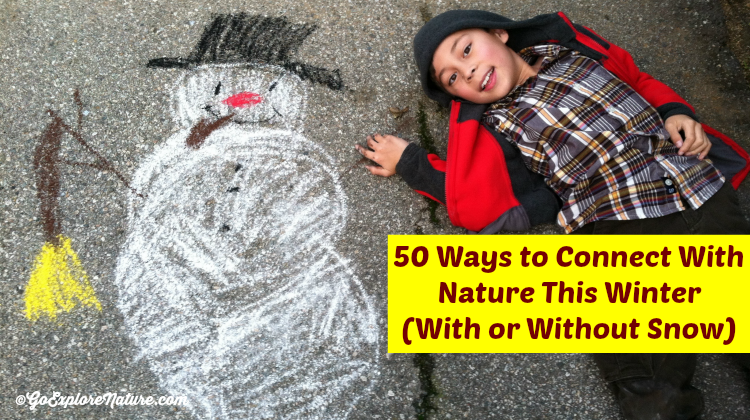
In a perfect world, getting outside would be as easy as heading out your back door and following your kids’ lead. But for those days when you need a little more inspiration, here are a slew of ways to connect with nature this winter – with or without snow. And don’t forget that on the worst of days, there are plenty of ways you can connect with nature inside, too.
20 Things to Do in Your Backyard
Go on a winter picnic
Build a backyard weather station
Start a family adventure journal
Have a cloud race
Make a pinecone bird feeder
Go on a backyard bug hunt
Keep a moon diary
Start a rock collection
Go stargazing
Participate in the Great Backyard Bird Count
Build a stick tower
Design your own chalk garden
Play the listening game
5 Ideas for Nature Walks & Scavenger Hunts
Go on a winter nature photo hunt
Take a color walk
Go on a micro safari
Take a winter nature walk
Go on a nature art walk
5 Winter Nature Crafts
Make nature wands
Create ice art
Make wind streamers
Try a Valentine nature craft
Make a recycled nature rattle
20 Ways to Connect with Nature in the Snow
Make a snow sculpture bird feeder
Build a snow fort
Make a snow castle with sand toys
Turn your mud pie kitchen into a snow kitchen
Build snow animals
Enjoy a snow picnic
Design a snowy treasure hunt
Make snow track pictures
Catch a snowflake on your tongue
Make your own snow sculpture
Create a snow maze
Have a snowball fight
Go sledding or tubing
10 Christmas Nature Activities
Decorate with nature for the holidays
Make a holiday card tree
Go on a neighborhood holiday lights walk
Create an ornament from nature
Make birdseed ornaments
Make twig stars
Head to a Christmas tree farm
Have a Christmas-themed picnic
10 Ways to Explore Nature In Winter
I don’t know about you, but winter is always the hardest season for me to come up with ideas to get us outside and exploring nature. It’s cold, it’s windy, everything is dormant… you know what I’m talking about, right?
So, what can you do?
I did some searching and came up with 10 fun kids activities to help us get out and explore nature in winter. Get out and explore those things that are unique to winter. You won’t even notice the cold.
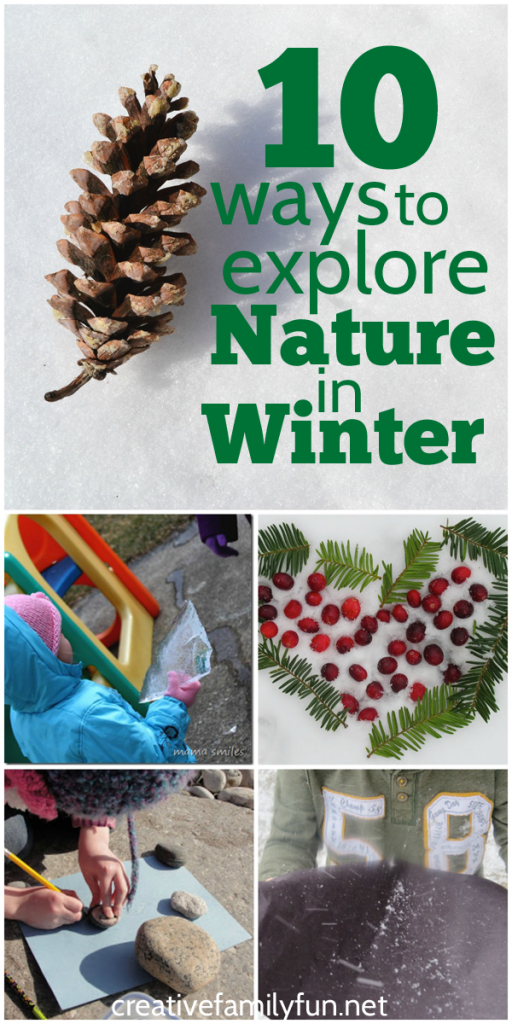
10 Ways to Explore Nature in Winter
1. Feed the birds.
Use existing bird feeders or make your own, like our simple bird feeders. Put the bird feeders close to a window and provide small notebooks, binoculars and a bird book. See what kind of birds live in your neighborhood in the winter. (Special note: if you do decide to feed the birds, please continue to feed them until spring comes and they are able to find their own food.)
2. Explore ice.
What are its properties? When does it melt? Try to break it. Mama Smiles recently spent some time exploring ice. Check out all the fun they had!
3. Learn to read an outdoor thermometer and check the temperature outside.
Use the opportunity to learn a little about weather and the characteristics of winter in your area.
4. Learn about snowflakes.
Look at them up close with a magnifying glass. What do you see? Teach Preschool shows you how to catch snowflakes on black paper so you can examine them up close.
5. Explore rocks.
It doesn’t matter the season, rocks are always in abundance. Have fun exploring and learning about rocks. Or, you can do like Kitchen Counter Chronicles and make rock art.
6. Look for signs of life.
Winter is the time of year when many plants are dormant. But, not everything! Go exploring and see if you can find any signs of life. If you need inspiration, Rainy Day Mum recently went searching for fairy homes (aka mushrooms).
7. Give your kids a camera and see what they can find.
Go on a photo walk with your kids. What do you notice? See the beauty in the details. Here are some great tips from Peanut Blossom for going on a photo walk.
8. Read a book about winter animals and look for signs of wildlife.
Try finding foot prints near a wooded area. Learn about which animals hibernate and which ones need to forage for food in the winter. Animals in Winter (Let’s-Read-and-Find-Out Science) by Henrietta Bancroft is a great resource for this activity.
You can also find some great Winter Nature Books here that will encourage you and your kids to get out and explore.
9. Bring it inside.
If it’s too cold to go outside and explore, bring some nature indoors. Set up a nature table with all the nature treasures you’ve collected throughout the year. Or, you can do like Mama Smiles did and bring some snow indoors to play. You don’t always have to be outside to explore nature!
10. Make art.
Get creative. Use the natural items that you find and make beautiful art. The Chocolate Muffin Tree made this beautiful snowy land art for Valentine’s Day.
Bonus activity:
PLAY! Throw snowballs, make a snow angel, collect sticks, and most of all have fun!
No matter the season, there are always great things to discover in nature. Bundle up and have some fun while you explore nature in winter.
You may also like one of these fun ideas:
15 Ways to Explore Nature in Spring
10 Ways to Play with Snow
10 Ways to Learn About Animals
Ice Experiments and Play Ideas for Preschoolers
Winter Nature Books for Kids
Our winters in Minnesota are so cold and snowy that’s it’s tempting to stay inside ALL THE TIME.
But sometimes, you’ve got to just shake off that cabin fever, bundle up, and get out and enjoy nature in winter.
If you need some inspiration, grab one of these winter nature books. They’re all great choices that will make you want to get outside and have some fun.
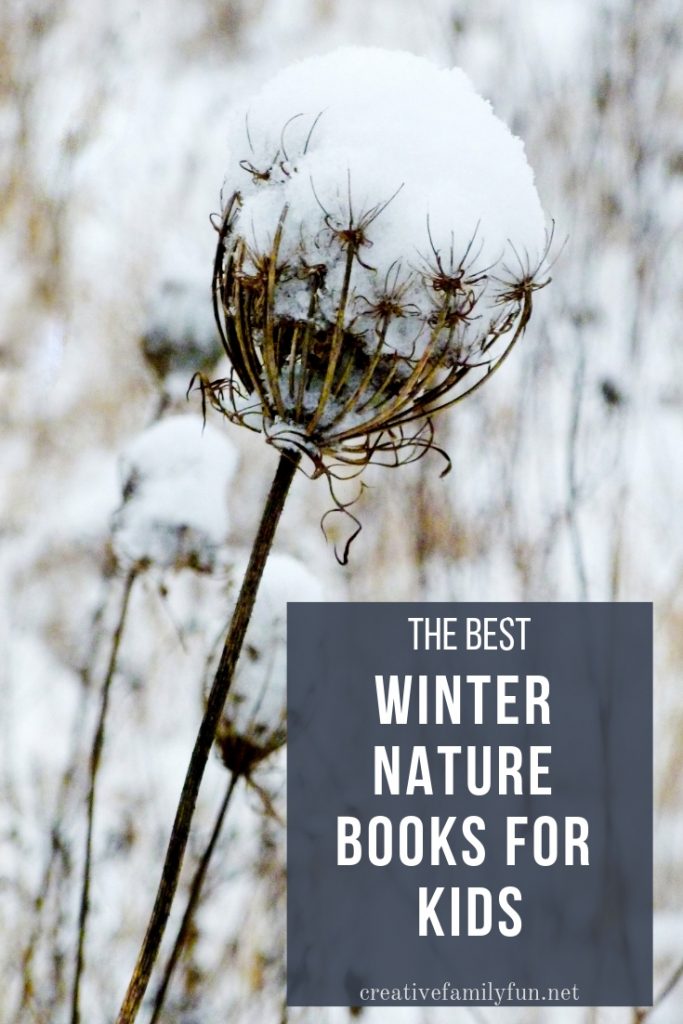
Best winter nature books for kids
Time to Sleep by Denise Fleming is the story of a group of animals getting ready to hibernate. It’s a great choice for toddlers and preschoolers.
Best in Snow by April Pulley Sayre. This simple story is probably more appealing to toddlers and preschoolers than older kids, but the beautiful snowy photographs will draw all ages in. This is a beautiful book!
Tracks in the Snow by Wong Herbert Yee. Follow along as a young child tries to discover what made the footprints in the snow outside her window.
Animals in Winter by Henrietta Bancroft and Richard G. Van Gelder. We’ve had this science-based story book in our collection for years. It’s a great and simple book about how different animals spend the winter.
Over and Under the Snow by Kate Messner tells the story of all the wildlife that make their winter homes under the snow while a young girls glides her way over the snow and all the wildlife.
Someone Walks By: The Wonders of Winter Wildlife by Polly Carlson-Voiles. Not all animals hibernate in the winter. Take a walk through the woods in this book to see all the animals that are still active in winter.
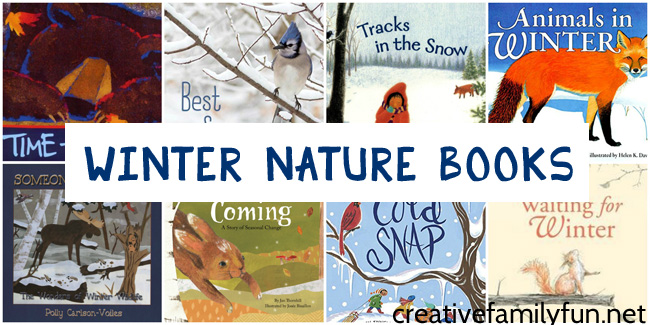
Winter Eyes by Douglas Florian is a book of kid-friendly poetry about winter. The poems are short, fun and a great poetry choice for a cold, blustery day.
Sugar Snow: Adapted from the Little House Books by Laura Ingalls Wilder. This Little House Picture Book is a simple story of the Wilder family’s experience with sugar snow and tells the process of making maple syrup.
Blizzard by John Rocco. Have you ever experienced a blizzard? Hear what it’s like in this fun book based on a true story from the author’s childhood.
Cold Snap by Eileen Spinelli. Winter can get COLD! This fun book tells the story of how one small town survived (and enjoyed) a cold snap.
The Story of Snow: The Science of Winter’s Wonder by Mark Cassino. This nonfiction book is packed full of great information all about snow that is more suited for your older kids (ages 7-10) than your younger kids. It’s a fascinating read with a ton of great close-up snowflake pictures.
Our favorite winter nature books
I had my girls choose their favorite book out of the pile of books we reviewed. They liked all the books, but these two were the overall favorites.
My 9-year-old chose Waiting for Winter by Sebastian Meschenmoser. She loves a book that makes her laugh out loud and this book (and its illustrations) did. It’s the story of a squirrel, hedgehog, and bear who have never seen snow and decide to stay awake until it snows.
My 7-year-old chose Winter’s Coming: A Story of Seasonal Change by Jan Thornhill. She loved the story of a young snowshoe hare named Lily, who has no idea what to expect from winter. As she talks to her many animal friends, she learns how they spend the winter and also how she will too.
Now that you’ve read these winter nature books and are inspired to get outside, what are you going to do? Sled, build a snowman, feed the birds?
Maybe try one of these 10 Ways to Explore Nature in Winter.
No matter what you choose, get outside and have some fun!
You may also like one of these winter activities:
Snow Painting Art Project
12 of the Best Winter Art Projects for Kids
Winter STEM Activities
Outdoor Winter Activities for Toddlers and Preschoolers at Rainy Day Mum
January Family Fun Ideas
Are you one of those families that like to go out and enjoy winter. Or do you tend to hibernate.
We’re one of those hibernating families. That’s why we often need a push to get out and do something fun.
That’s why these January family fun ideas are so awesome. They’ll push you to go out and have quality time together. Or, if you’re already active, you’ll find some new family adventure ideas.

January Family Fun Ideas
Whether you’re looking for some last minute fun or want to schedule some family time in your calendar, these January family fun ideas will be perfect.
There’s no need to write them down! If you keep reading to the bottom, you’ll find a link for a simple one-page printable list.
Some will get you outside enjoying the snow and others are perfect for some cozy time inside. No matter the climate you live in, you’ll find some ideas that will the right fit for your family.
Make Snow Angels.
Do you know how to make snow angels? You just stand still with your legs a bit wide and your arms held straight out to the side. Fall straight back. Once you land, move your legs back and forth and your arms up and down. Stand up carefully and you’ll see an image of an angel with wings.
This is so much fun, but works best in new powdery snow. We tend to get plenty of it here in Minnesota!
While you’re outside making snow angels, stay outside for awhile and throw snowballs or build a snowman. Just have some simple fun family time out in the snow.
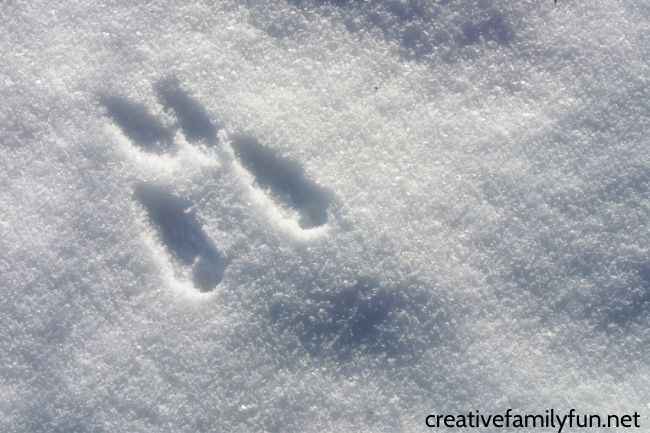
Go On a Winter Nature Walk.
You can go on a nature walk just about anywhere. Try a nature center, park, or even your own neighborhood. You can find signs of nature in so many places!
While on your winter nature walk, look for signs of life. Do you see any signs of animals (like footprints in the snow). Check out the plants. Which are evergreen and which are dormant for the winter?
Read one of these fun Winter Nature Books for Kids for inspiration.
Have fun exploring the natural world together!
Pick a Random Country From Around the Globe and Go to the Library to Find a Book or Two About It.
You can either close your eyes, spin, and point or you can just choose a country that fascinates you. Either way, the goal is to learn about a new country.
Hit up the kid’s nonfiction area for books to help you learn about another country. The Country ABCs series of books are a great option if your library has them.
You could also check out the adult nonfiction area for travel guides or cookbooks. Or, try searching for folktales from your chosen country in your library’s catalog.
Prepare a New Soup Recipe
Search in your cookbooks, one from the library, or just search on Pinterest for a new soup recipe to try. Cook it together with your family for a simple (and warming) family dinner.
Soup is such a great meal to cook with your kids. If your kids are old enough they can help chop vegetables. They can also stir, measure, pour ingredients, and be a taste tester.
Choose a simple recipe that your kids will love such as this Homemade Vegetable Alphabet Soup at Kitchen Counter Chronicles. Or they may love this Creamy Chicken Pasta Soup at My Kids Lick the Bowl.
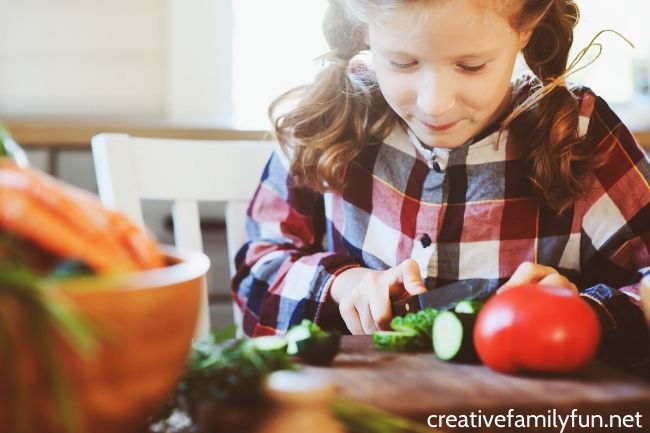
Build Block Towers
Get out your wooden blocks and get building!
How tall can you build a tower before it collapses? Is there a way to make you tower stronger?
Or, you can add a little math with this fun counting blocks activity.
Tip: If you don’t already have a set of blocks, this Melissa and Doug set is a great choice. Or, invest in a beautiful heirloom set like these maple blocks from EverwoodFriends on Etsy.
Make a scrapbook of holiday pictures.
Print out some of your favorite photos from this past holiday season. Search your pictures from Christmas, Thanksgiving, or even Halloween.
Gather them together and make a small scrapbook of memories. Slip them into a simple photo album, like this personalized Christmas album from Personalized A2Z on Etsy.
Or, you can skip the printing the process and put together a photo book like you can get from Shutterfly.
Paint a picture using only white paint on colored paper.
Grab a selection of construction paper or colored card stock and a tube of white paint.
Everyone can choose a different color of paper and paint a picture using only white paint.
Will you make an abstract picture, a fun snowy scene, or something different?
It will be so much fun to see everyone’s creations!
Set a Few Goals for the New Year.
What do you hope to accomplish as a family? Are there any places you want to travel to or any fun activities you want to do.
Spend some time together and brainstorm ideas. Put a few ideas down on paper so you and your family can be on the same page.
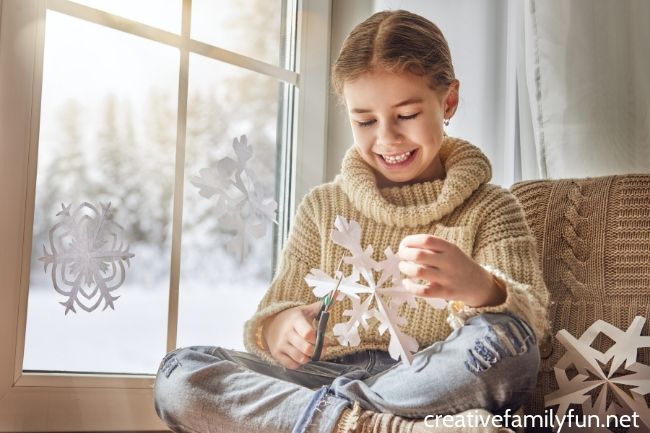
Watch a Fun Winter Movie
Have a winter family movie night! Grab some comfy blankets, make mugs of hot chocolate, and settle in for a fun movie night.
Queue up a great winter movie, like Frozen or Ice Age. Anything that takes place in the winter or features a lot of snow would be perfect!
Or check out our list of recommended Winter Family Movies for a Cozy Movie Night.
Movie nights are our favorite family adventure!
Decorate a Window With Paper Snowflakes
Make traditional paper snowflakes. (Here’s a great tutorial from Kitchen Counter Chronicles.) Or try something different, like these fun Name Snowflakes from Childhood 101.
Spend the afternoon cutting and creating, then tape them up in a window (or two or three!). Now you can enjoy your creation all winter long!
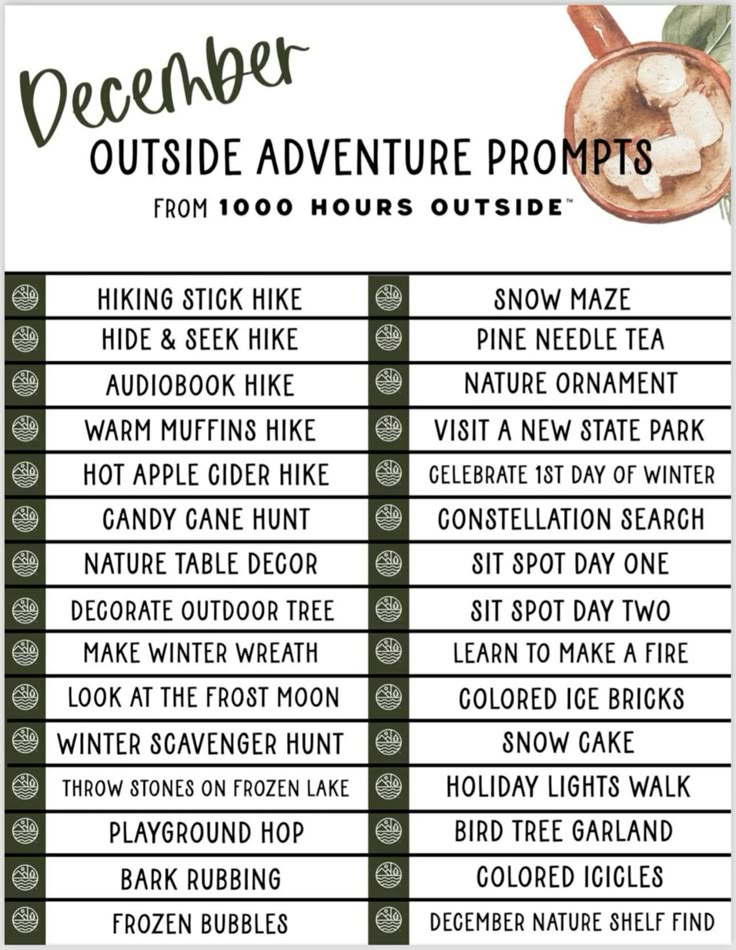
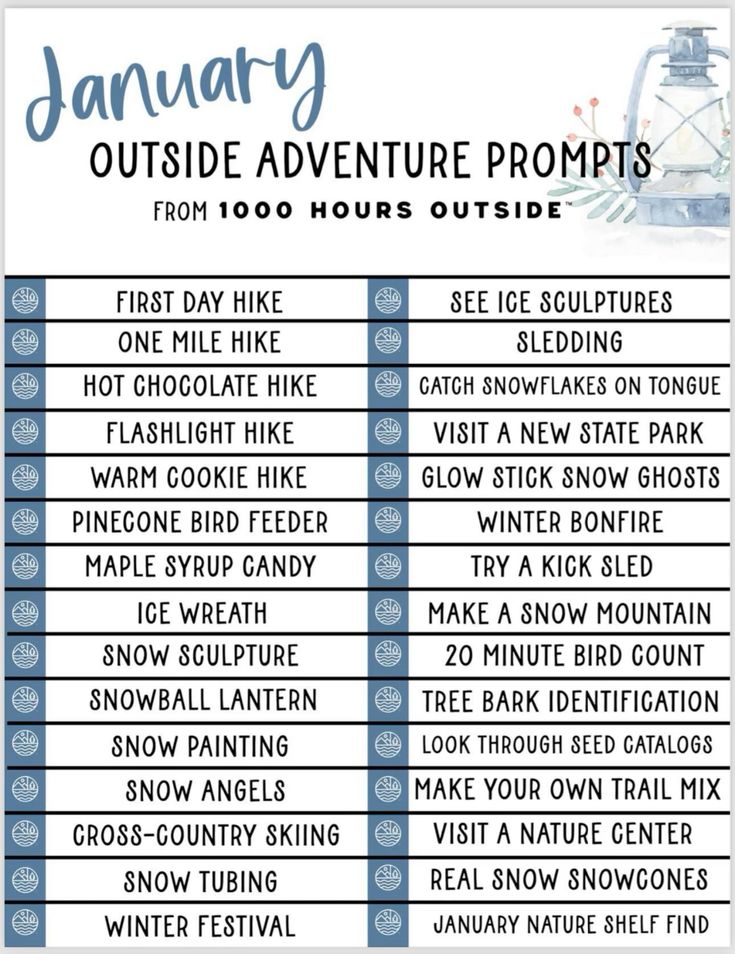
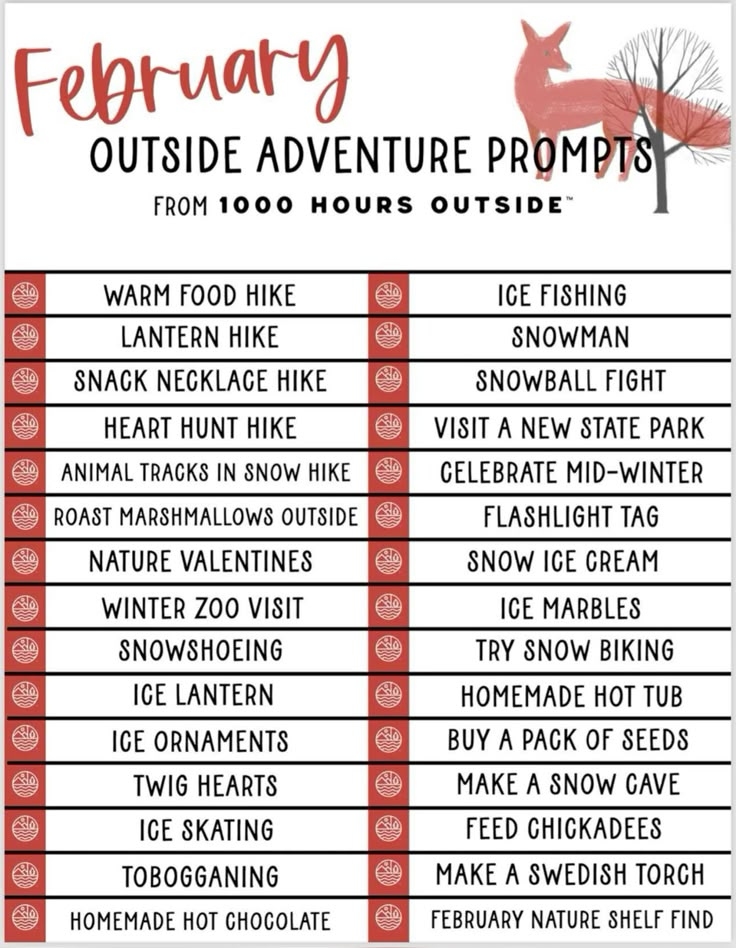
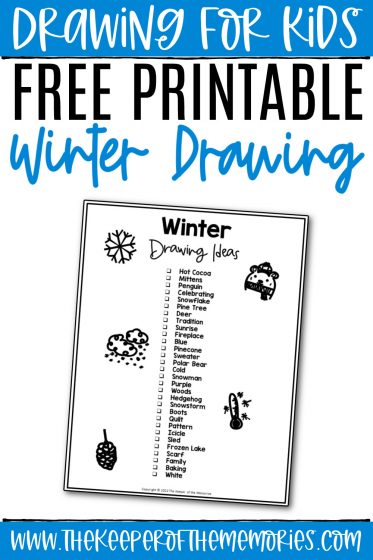
Winter Drawing Ideas & Art Projects for Kids
Winter is coming soon! I’m so excited to share my favorite Winter Drawing Ideas with you. This printable list of seasonal drawing for kids prompts will encourage your little learners to get creative and have fun this winter. These printable drawing prompts are perfect for creative learning fun and practice using imagination all winter long….
Read MoreWinter Drawing Ideas & Art Projects for Kids

Free Printable Winter Drawing Challenge
December 30, 2022
Strengthen fine motor skills while encouraging creative thinking with this Free Printable Winter Drawing Challenge. This adorable drawing for kids printable is the perfect way to spend quality time with your kids this winter. Grab yours today! We’ve always enjoyed drawing and painting and these cute seasonal drawing challenges are obviously no exception. This free…
Read MoreFree Printable Winter Drawing Challenge

January Family Fun Printable
Did you see some ideas you want to try? Or do you want to do them all?
No matter what, you can print out all the family adventures on this simple printable. Click the link below, print, and then hang it up to inspire your family to have a lot of winter family fun.
Print your January Family Adventures here.
You May Also Like One of These Family Activities
Perfect Puzzles for the Family to Enjoy
The Best Family Friendly Movies for Movie Night
10 Fun Family Exercise Ideas
Family Bird Watching Club
Winter STEM Projects for Kids
Snow, icicles, frost, and more! There are so many fun things to explore in the winter.
These fun Winter STEM Projects for Kids will help you and your children explore all these fun aspects (and more).
So, let’s gather some supplies and get ready to learn.
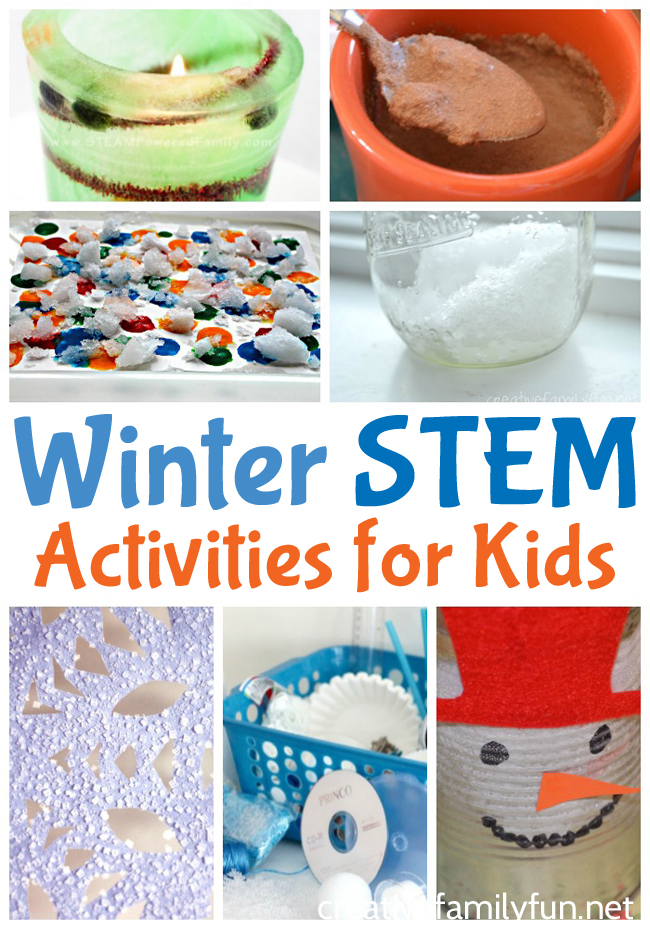

You’ll find projects to help you explore snow and ice. Or, explore a favorite winter drink. You’ll create, you’ll explore, and you’ll learn a lot.
Let’s go have some fun!

Science Winter STEM Projects
Learn about friction with our fun Hockey Science Experiment.
Practice prediction and observation while you experiment with our Melting Snow Science Experiment.
Explore a favorite winter drink with our fun Hot Chocolate Science Experiment.
Make frost and explore winter weather with this Frost Snowman Experiment from Science Sparks.

Art Winter STEM Projects
Explore melting snow to make art with this snow process art project from Mom Explores the Smokies.
Grow salt crystals to decorate your paper snowflakes with this fun Growing Salt Crystals project from Little Bins for Little Hands.
Use science to make beautiful frosty windows with this Epsom Salt Painting idea from Babies to Bookworms.
Create beautiful colorful icicles with this Colorful Icicle Science Project from Housing a Forest.

Winter Engineering STEM Activities
Build a snowman with this fun STEM Snowman Craft from How Wee Learn.
Explore symmetry while you build beautiful snowflakes with this fun Pipe Cleaner Snowflake craft from The Joy of Sharing.
Put together a Winter Tinkering Kit from Little Bins for Little Hands and let your kids build and explore.
Engineer an ice lantern with this fun project from STEAM Powered Family.
You may also like one of these fun winter activities:
10 Ways to Explore Nature in Winter
Fun Winter Nature Books for Kids
Snow Painting
The Best Winter Art Projects for Kids
More Science Experiments for Kids
20 Science Experiments You Can Do in a Jar
How to Make a Barometer & Measure the Weather
Recommended
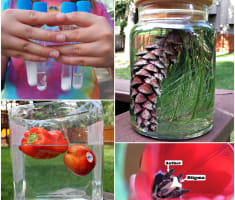
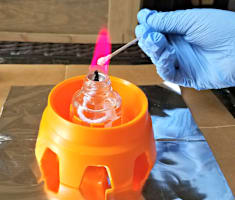

STEAM Art & Science activities
6 Ideas to Encourage Curiosity for Nature Science
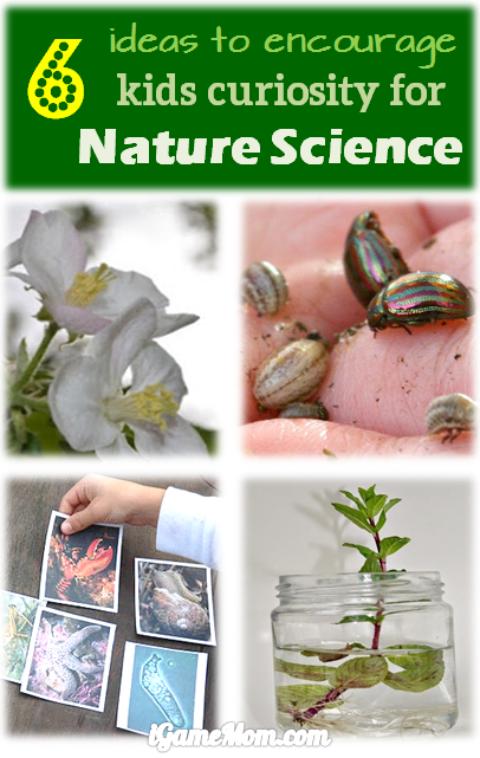
While you are outside with kids, you can
Observe and learn about insects, such as beetles
Watch how plants and trees such as apple trees grow
Experiment and learn about camouflage
you can even try to Grow mint in waterin your kitchen
To bring the observation to more science studies, try these great resources on animal classifications
or get hands-on to create various landforms with bread dough
Looking for more nature science learning ideas?
Check out:
9 Apps Making Outdoor Science Learning Fun.
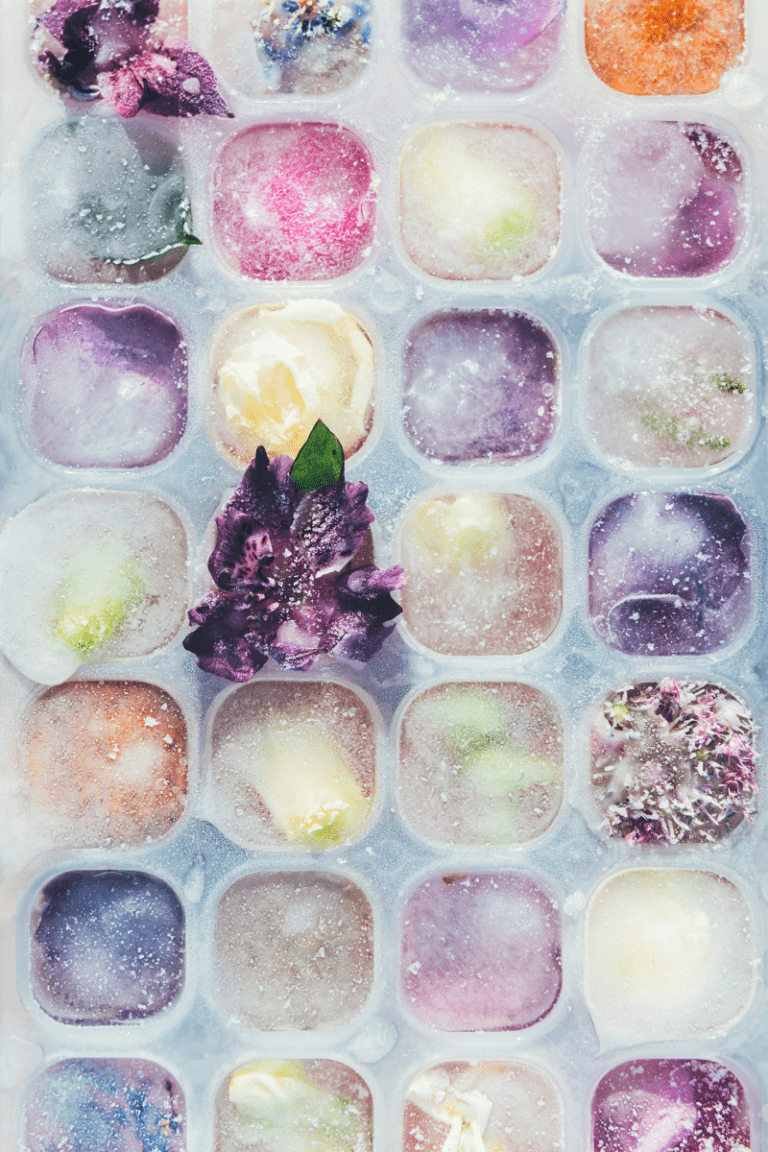
100+ of the Best Ice Sensory Activities for All Ages
Playing with ice is a low-cost, sensory-rich, and open-ended learning activity. Plus, playing with ice is a wonderful way to support development in learning areas like fine motor skills, cognitive skills, and language development. This blog post will share over 100 different ways to play with ice. I’m also sharing instructions for making different types…
Read More-100+ of the Best Ice Sensory Activities for All Ages
Winter Science eXPERIENCES
Now Playing
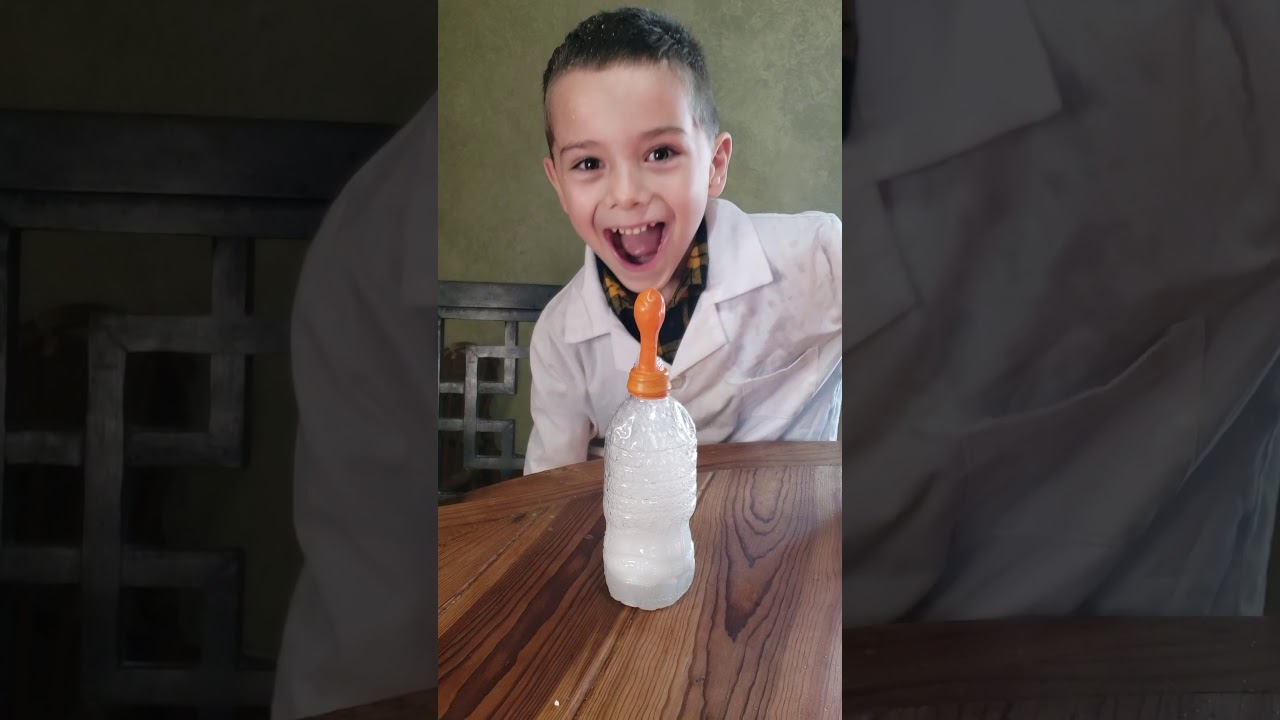
Play VideoFloating Egg Science Activity #ShortsShareWatch on
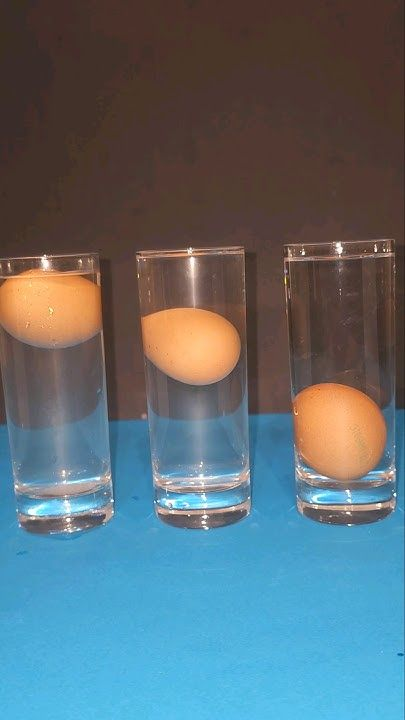
Floating Egg Science Activity #Shorts
*We’re an affiliate – we may earn a commission through qualifying purchases from the links on this page. As always, thanks!*
Spread the love
Winter is coming, and the colder weather sets the stage for some cool Winter science experiments. It’s a great opportunity to learn about ice, snowflakes, snow, and all things winter
These hands-on activities make learning fun and relevant during the winter months. Gather your warm clothes, and try some simple science experiments and STEM activities fit for the season. Let’s explore!
Symmetrical Snowflake Cutting
You don’t need to head out into the cold for this activity. Create beautiful snowflakes by folding and cutting paper. This classic activity teaches children about geometry and symmetry while making festive seasonal decorations.
Materials:
White paper or thin cardstock
Scissors
Pencil (optional)
Glitter or markers (optional for decoration)
Instructions:
Prepare the Paper:Start with a square piece of paper. If using rectangular paper, fold one corner to the opposite edge and cut off the excess to make a square.
Fold the Paper:Fold the square in half diagonally to form a triangle.Fold the triangle in half again to make a smaller triangle.Fold the triangle into thirds by bringing the right corner across the front and the left corner behind.
Trim Excess Paper:Cut off the uneven edges at the bottom so you have a neat wedge shape.
Design Your Snowflake:Draw simple shapes along the edges of the folded paper if desired.
Cut Out Shapes:Carefully cut small shapes out of the edges of the folded paper. Be sure not to cut all the way across.
Unfold the Snowflake:Gently open the paper to reveal a symmetrical snowflake.
Decorate (Optional):Add glitter or color with markers to enhance your snowflake.
Scientific Concepts:
Symmetry: Understanding how identical parts on opposite sides create balance.
Geometry: Exploring shapes and how they fit together.
Pattern Recognition: Seeing how repeated shapes form complex designs.
Extra Tips:
Use different sizes of paper to make various snowflake sizes.
Experiment with different cuts to create unique patterns.
Discuss how no two snowflakes are exactly alike in nature.

Growing Crystal Ornaments
Grow your own crystals to make sparkling ornaments. This experiment demonstrates how crystals form from a saturated solution.
Materials:
Borax powder (3 tablespoons per cup of water)
Hot water (enough to fill your container; about 1 to 2 cups per ornament)
Glass jar or container (heat-resistant)
Pipe cleaners (one per ornament)
Pencil or stick (we used chopsticks)
String
Spoon
Food coloring (optional)
Instructions:
Shape the Ornament:Bend a pipe cleaner into a festive shape like a star or heart.
Attach the String:Tie a piece of string to the top of the pipe cleaner shape.Tie the other end to a pencil or stick.
Prepare the Solution:Boil water and carefully pour it into the jar.Add borax powder to the water (about 3 tablespoons per cup of water).Stir until the borax dissolves, creating a saturated solution.Add food coloring if desired.
Submerge the Ornament:Place the pipe cleaner shape into the solution, hanging it from the pencil so it doesn’t touch the sides or bottom.
Let Crystals Grow:Leave the jar undisturbed overnight.
Remove and Dry:Carefully take out the ornament.Let it dry completely on a paper towel.
Scientific Concepts:
Crystallization: Understanding how crystals form when a saturated solution cools.
Saturation Point: Learning that a solution can hold only a certain amount of dissolved substance.
Nucleation Sites: Seeing how crystals start to form on the pipe cleaner surface.
Extra Tips:
Ensure the solution is fully saturated for the best crystal growth.
Use different shapes and colors for variety.
Handle the crystals gently; they can be fragile.
Creating Festive Ice Ornaments
Here’s a fun science activity to make decorative ice ornaments to hang outside in cold weather. Learn about changing states of matter as water freezes (and thaws to turn into liquid again.)
Materials:
Shallow containers or molds (like muffin tins)
Water
Natural items (berries, leaves, pine needles)
Ribbon or string
Freezer or outdoor area below freezing
Small loops of string or ribbon
Instructions:
Arrange Decorations:Place natural items in the bottom of each container.
Add Water:Pour water over the items, filling the container halfway.
Insert Hanging Loop:Place a loop of string or ribbon into the water, ensuring one end is submerged.
Freeze the Ornaments:Place the containers in the freezer or leave them outside if it’s cold enough.Allow them to freeze completely.
Remove from Molds:Once frozen, remove the ice ornaments from the containers.
Hang Outside:Use the embedded loops to hang the ornaments on tree branches.
Scientific Concepts:
Freezing Point: Learning how water turns to ice at 0°C (32°F).
States of Matter: Observing the change from liquid to solid.
Transparency and Light: Noticing how light passes through ice.
Extra Tips:
Use distilled water for clearer ice.
Add food coloring for colorful ornaments.
Monitor the weather to ensure temperatures stay below freezing.
Check out some other experiments with changing states of matter
Frozen Sun Catchers
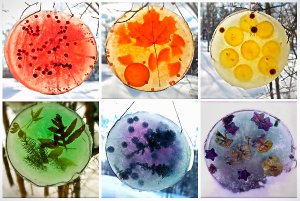
Create beautiful sun catchers made of ice that capture sunlight. This project combines art with science to demonstrate freezing and light refraction.
If you made ice ornaments in the above experiment, you can observe how they catch and refract light.
If you want a simpler version of this and are fortunate enough to have hanging icicles on a sunny day, you can check out how the ice reflects and refracts the sunlight.
Materials:
Round cake pan or pie dish
Water
Natural items (flowers, leaves, citrus slices)
String or ribbon
Small plastic cup or bottle cap
Freezer or outdoor area below freezing
Instructions:
Arrange Decorations:Place natural items in the bottom of the pan.
Add Water:Fill the pan with water, covering the items.
Create a Hole for Hanging:Place a small plastic cup or bottle cap filled with stones on the edge of the pan, half-submerged. This will create a hole when frozen.
Freeze the Sun Catcher:Put the pan in the freezer or leave it outside in freezing temperatures.
Remove the Mold:Once fully frozen, take the pan out.Remove the plastic cup to reveal the hole.
Hang the Sun Catcher:Thread a piece of string or ribbon through the hole.Hang it outside where it can catch sunlight.
Scientific Concepts:
Light Refraction: Seeing how light bends when passing through ice. Can you get a prism or rainbow effect?
Freezing Process: Understanding how water solidifies and traps objects.
Temperature Effects: Observing how ice behaves in different conditions.
Extra Tips:
Hang the sun catcher where it gets direct sunlight for the best effect.
Experiment with different shapes and sizes of molds.
Discuss what happens when the temperature rises and the ice melts.
Snowstorm in a Jar
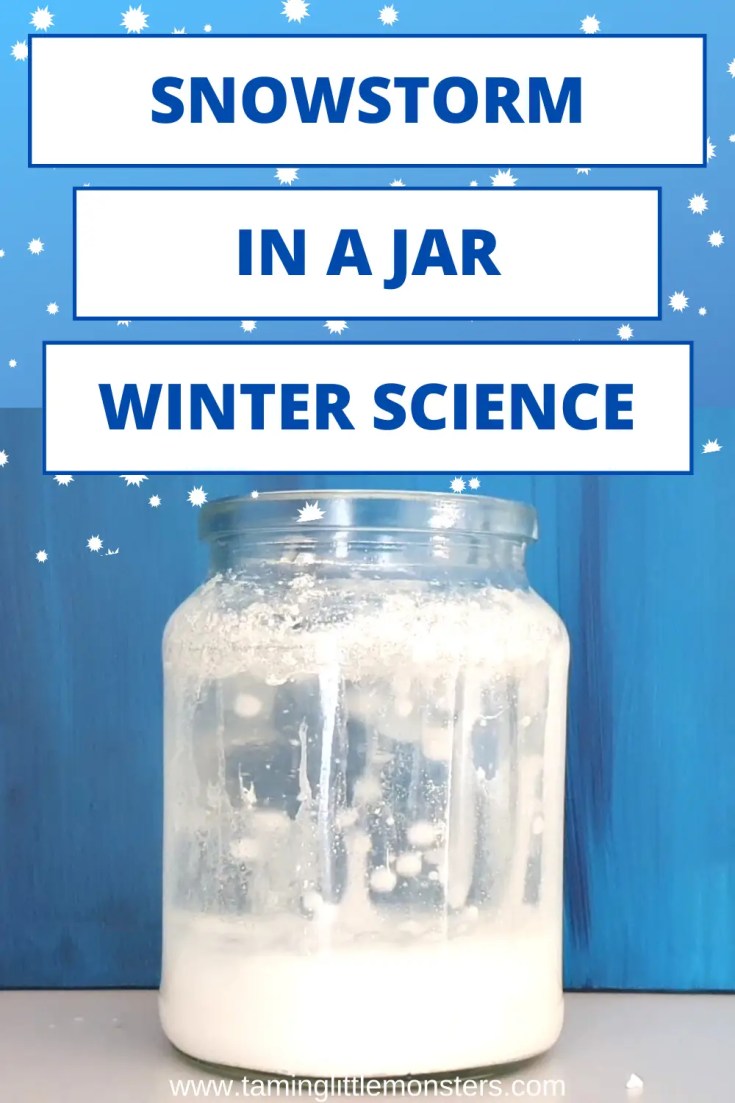
Create a swirling snowstorm inside a jar. This activity shows how liquids interact and teaches about density and chemical reactions.
Materials:
Clear glass jar with lid (16 ounces or larger)
Baby oil (1 cup)
Warm water (1 cup)
White paint (1 tablespoon)
Alka-Seltzer tablet (1 tablet, broken into pieces)
Silver glitter (1 teaspoon, optional)
Blue food coloring (a few drops, optional)
Spoon for stirring
Instructions:
Fill the Jar with Oil:Pour 1 cup of baby oil into the jar.
Prepare the Water Mixture:In a separate container, mix 1 cup of warm water with 1 tablespoon of white paint.Stir until the paint dissolves.Add a few drops of blue food coloring if desired.
Combine Liquids:Slowly pour the water mixture into the jar with the oil.Allow the layers to settle; the water will sink below the oil.
Add Glitter (Optional):Sprinkle 1 teaspoon of silver glitter into the jar.
Create the Snowstorm:Break an Alka-Seltzer tablet into small pieces.Drop one piece into the jar.Watch as the “snow” swirls inside.
Repeat the Reaction:When the bubbling stops, add another piece of Alka-Seltzer to continue the effect.
Scientific Concepts:
Density: Oil floats on water because it is less dense.
Chemical Reaction: Alka-Seltzer reacts with water to produce carbon dioxide gas.
Movement of Gas Bubbles: Gas bubbles carry water upward through the oil, creating a snowstorm effect.
Extra Tips:
Safety: Do not seal the jar tightly during the reaction.
Experiment: Try different amounts of paint or glitter.
Reuse: You can repeat the reaction multiple times by adding more Alka-Seltzer.
Melting Ice with Salt
Discover how salt affects the melting rate of ice. This experiment demonstrates how substances can change the freezing point of water.
Materials:
Ice cubes (4 or more)
Two plates or shallow bowls
Table salt (1 tablespoon)
Timer or stopwatch
Food coloring (a few drops, optional)
Instructions:
Place Ice Cubes:Put two ice cubes on each plate.
Add Salt to One Plate:Sprinkle 1 tablespoon of salt evenly over the ice cubes on one plate.Leave the other plate without salt as a control.
Optional Coloring:Add a drop of food coloring on top of each ice cube to observe melting patterns.
Start Timing:Begin the timer to track melting time.
Observe and Compare:Watch how quickly the ice melts on each plate.Note the differences over 15 minutes.
Record Findings:Write down your observations about which ice cubes melted faster.
Scientific Concepts:
Freezing Point Depression: Salt lowers the freezing point of water, causing ice to melt faster.
Phase Change: Understanding how substances can change states from solid to liquid.
Real-World Application: Explains why salt is used to melt ice on roads.
Extra Tips:
Experiment Further: Try using sugar or sand instead of salt.
Discussion: Talk about how this affects the environment.
Observation Skills: Encourage noting temperature and other conditions.
Build a Snow Volcano
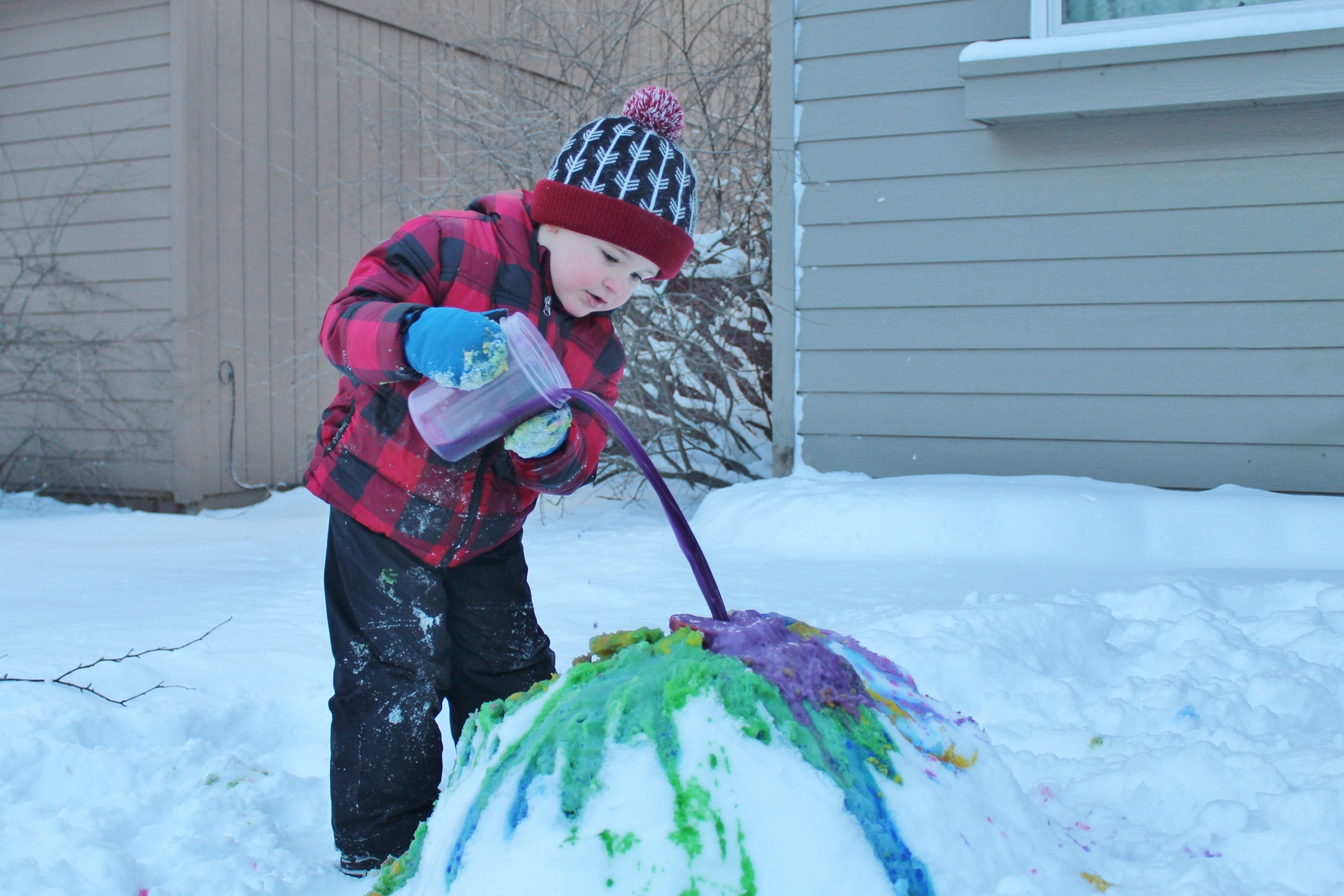
This is a great snow day activity! Make an erupting volcano out of snow. This fun activity illustrates a classic chemical reaction using common household items.
Materials:
Fresh snow (enough to build a small mound)
Empty plastic bottle (12-ounce size)
Baking soda (4 tablespoons)
White vinegar (1 cup)
Dish soap (2 tablespoons)
Red food coloring (a few drops, optional)
Funnel (optional)
Measuring cups and spoons
Instructions:
Position the Bottle:Place the empty bottle upright in the snow.
Build the Volcano Shape:Pack snow around the bottle to form a mountain, leaving the opening exposed.
Add Ingredients:Use a funnel to add 4 tablespoons of baking soda into the bottle.Pour in 2 tablespoons of dish soap.Add a few drops of red food coloring for lava effect.
Prepare for Eruption:Measure 1 cup of vinegar in a separate container.
Erupt the Volcano:Quickly pour the vinegar into the bottle.Step back and watch the eruption flow over the snow.
Scientific Concepts:
Chemical Reaction: Baking soda reacts with vinegar to produce carbon dioxide gas.
Gas Expansion: The gas creates pressure, causing the mixture to bubble and overflow.
Acid-Base Reaction: An example of how acids and bases interact.
Extra Tips:
Safety: Stand back to avoid splashes.
Cleanup: The ingredients are safe for the environment.
Variations: Try different amounts to see how the eruption changes.
Related Post Alert!
Check out this post for more on the science behind the baking soda and vinegar reaction.
Make a Snow Gauge
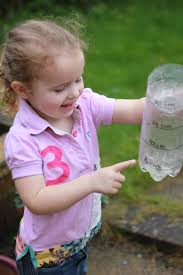
Every wonder how much snow just fell in your backyard or sidewalk? Track snowfall with a homemade snow gauge. This project teaches about measuring and recording weather data.
Materials:
Clear plastic bottle or jar (straight sides, 1-liter size works well)
Ruler
Permanent marker
Notebook and pen
Shovel (optional, to clear placement area)
Rocks or stakes (to secure the gauge)
Instructions:
Prepare the Gauge:Remove labels from the bottle.Use the ruler to mark measurements in centimeters or inches on the side.
Number each mark clearly with the permanent marker.
Select a Location:Find an open area away from buildings or trees.
Place the Gauge:Secure the bottle upright using rocks or stakes.Ensure the bottom is level with the ground.
Record Initial Reading:Write down the date and time you set up the gauge.
Measure Snowfall:After it snows, check the depth of snow collected in the gauge.Record the measurement in your notebook. How many inches of snow did you record?
Reset the Gauge:Empty the snow and place the gauge back for the next snowfall.
Scientific Concepts:
Measurement: Learning to use tools to collect data.
Meteorology: Understanding precipitation and weather patterns.
Data Collection: Tracking changes over time.
Extra Tips:
Consistency: Measure at the same time each day.
Graph Results: Create charts to visualize snowfall over weeks.
Explore Further: Compare your data with local weather reports.
Observe Animal Tracks

Discover the wildlife around you by finding and identifying animal tracks in the snow. This activity enhances observation skills and teaches about animal behavior in winter.
We live in a suburban area, and are always amazed at the number and diversity of animal tracks we see the morning after a fresh snowfall!
Materials:
Warm clothing and boots
Notebook and pencil
Field guide to animal tracks – Google Lens also works (optional)
Camera or smartphone (optional)
Measuring tape or ruler (optional)
Instructions:
Prepare for the Walk:Dress warmly with appropriate winter gear.Bring your notebook, pencil, and optional materials.
Choose a Location:Select a safe outdoor area where animals are likely to be present, such as a park, forest, or near a stream.
Begin Exploring:Walk slowly and look carefully at the ground for tracks in the snow.
Observe the Tracks:When you find tracks, examine them closely.Note the size, shape, and pattern of the tracks.Use the measuring tape to record the size if desired.
Record Your Findings:Sketch the tracks in your notebook.Write down any observations about the number of toes, claw marks, and gait patterns.
Identify the Animal:Use a field guide or app to help identify which animal made the tracks.
Take Photos (Optional):Photograph the tracks for later study or sharing.
Continue Exploring:Look for other signs of animals, such as droppings, feathers, or burrows.
Scientific Concepts:
Biology and Ecology: Understanding animal habitats and behaviors during winter.
Observation Skills: Enhancing attention to detail and recording data.
Track Identification: Learning how different animals have unique footprints.
Extra Tips:
Safety First: Always tell someone where you’re going and consider going with a companion.
Best Time: Early morning is ideal when tracks are fresh.
Respect Wildlife: Observe animals from a distance and do not disturb their habitats.
Different Surfaces: Tracks can also be found in mud or soft ground if snow is not available.
Frozen Bubble Science
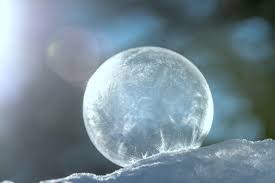
Blow bubbles in freezing temperatures and watch them turn into delicate ice spheres. This experiment demonstrates how bubbles behave differently in the cold.
Materials:
Bubble solution (store-bought or homemade)
Bubble wand or straw
Cold outdoor temperatures (below 0°C or 32°F)
Gloves and warm clothing
Optional Homemade Bubble Solution:1 cup water2 tablespoons dish soap1 tablespoon corn syrup or sugar
Instructions:
Prepare the Bubble Solution (If Making Homemade):Mix 1 cup of water, 2 tablespoons of dish soap, and 1 tablespoon of corn syrup or sugar.Stir gently to avoid creating foam.
Dress Warmly:Wear gloves and warm clothing to stay comfortable outside.
Go Outside:Choose a day when the temperature is well below freezing.
Blow Bubbles:Dip the bubble wand into the solution.Gently blow bubbles into the air or onto a cold surface like snow.
Observe the Bubbles:Watch as the bubbles freeze and form ice crystals.Notice how the bubbles become fragile and may shatter upon touching.
Take Photos (Optional):Capture images of the frozen bubbles to observe the patterns.
Scientific Concepts:
States of Matter: Observing how liquids can turn into solids.
Freezing Point: Learning that the bubble solution freezes in cold temperatures.
Surface Tension: Understanding how bubbles form and maintain their shape.
Extra Tips:
Best Conditions: Calm, windless days work best to prevent bubbles from popping.
Enhance Visibility: Use a dark background to see the frozen bubbles better.
Experiment: Try placing bubbles on different cold surfaces to see how they freeze.
Related Post Alert!
Check out this post for more experiments with bubbles!
Making Fake Snow

Do you live in an area where snow is a rare event, or it just hasn’t snowed in a while? Make your own snow using simple household materials. This activity teaches about absorption and the properties of polymers.
Materials:
Baking soda (2 cups)
White hair conditioner (1/2 cup) or shaving cream
Large mixing bowl
Spoon or hands for mixing
Alternative Materials (Using Sodium Polyacrylate):Disposable diapers (to extract sodium polyacrylate)Water (2 cups)
Instructions:
Combine Ingredients:Pour 2 cups of baking soda into the mixing bowl.
Add Conditioner or Shaving Cream:Gradually add 1/2 cup of white hair conditioner or shaving cream to the baking soda.
Mix Thoroughly:Use a spoon or your hands to mix until the mixture reaches a snow-like consistency.
Adjust Consistency:If too dry, add more conditioner or shaving cream.If too wet, add more baking soda.
Play with the Fake Snow:Mold it into shapes, make snowballs, or build small snowmen.
Alternative Method Using Sodium Polyacrylate:
Extract Polymer:Carefully open a disposable diaper to access the fluffy material inside.Place the fluff into a bowl.
Add Water:Slowly add up to 2 cups of water to the fluff, stirring as you go.The material will absorb the water and expand into a snow-like substance.
Scientific Concepts:
Absorption: Understanding how materials can soak up liquids.
Polymers: Learning about long chains of molecules that have special properties.
States of Matter: Exploring how materials can change texture and form.
Extra Tips:
Safety: Do not ingest the fake snow and wash hands after play.
Storage: Keep the fake snow in an airtight container for future use.
Cold Snow: Place the fake snow in the refrigerator for a real snow feel.
Make Your Own Frost
Colder temperatures usually mean frost. We can do a simple experiments and create our own frost to learn how it works.
Create frost on a can to observe how condensation and freezing occur. This experiment demonstrates temperature differences and phase changes.
Materials:
Empty metal can (like a soda can)
Crushed ice (enough to fill the can halfway)
Salt (1/4 cup)
Spoon for stirring
Thermometer (optional)
Paper towels or tray (to catch condensation)
Instructions:
Prepare the Can:Rinse the can and remove any labels.Place it on a paper towel or tray to catch drips.
Fill the Can with Ice:Fill the can halfway with crushed ice.
Add Salt:Pour 1/4 cup of salt over the ice in the can.
Stir the Mixture:Use the spoon to mix the salt and ice together thoroughly.
Wait and Observe:Watch the outside of the can.After a few minutes, frost will begin to form on the surface of the can.
Optional Temperature Measurement:Use a thermometer to measure the temperature inside the can. It may drop below freezing.
Scientific Concepts:
Freezing Point Depression: Salt lowers the freezing point of water, causing the temperature to drop.
Condensation and Freezing: Water vapor in the air condenses on the cold can and freezes into frost.
Phase Changes: Observing the transition from gas (water vapor) to solid (frost).
Extra Tips:
Experiment Further: Try using different amounts of salt to see how it affects frost formation.
Discussion: Talk about how this relates to frost forming on cold surfaces in winter.
Safety: Handle the cold can carefully to avoid frostbite.
Christmas Activities and Experiments
Looking for some holiday themed activities? Check out these Christmas STEM Activities and 3D Printing Ideas for Christmas!
Wrap Up – Winter STEM Activities
Winter offers unique opportunities for learning and exploration. You can see concepts in action, from the formation of ice crystals to the behavior of animals in cold climates. Hands on experiences like these make abstract ideas tangible and understandable.
Try these winter themed science experiments with your family or classroom. It’s a fun and educational way to spend time during the winter months and a great cure for cabin fever. Embrace the season, and let the wonders of science warm your imagination.

